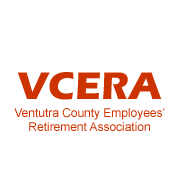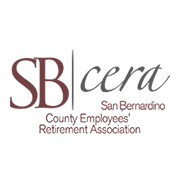Workers’ Comp & Disability Retirement Overlap: Attorneys Explain Which Benefits Apply
Most California public employees understand that workers’ compensation provides wage replacement and medical coverage when they’re injured on the job. And they also realize that, under certain circumstances, their disability retirement system may also offer benefits if the injury or illness permanently prevents them from performing their duties. But because both systems can apply to the same injury, it’s easy to become confused about which benefits to claim, how they interact, and whether pursuing one will affect eligibility for the other.
Understanding the relationship between workers’ compensation and disability retirement is especially important for employees covered by public systems such as CalPERS, OCERS, LACERA, or San Bernardino County Employees’ Retirement Association. Each system follows California law but applies its own rules when determining eligibility.
In this article, the California disability retirement attorneys at Cantrell Green explain how these benefit programs overlap, when each applies, and what injured public employees should consider before filing.
Understanding Disability Retirement Under California Law
Disability retirement is a benefit available to public employees who become permanently incapacitated from performing their job duties due to illness or injury. The program is governed by California’s Government Code — specifically Sections 21150 through 21156 for CalPERS members — and by comparable provisions in county retirement systems governed by the County Employees Retirement Law of 1937 (CERL).
Unlike workers’ compensation, which focuses on whether the injury occurred in the course of employment, disability retirement examines whether the condition prevents the employee from continuing in their current position. In other words, a disabling condition may qualify even if it did not arise directly from work activities, as long as it renders the employee unable to fulfill essential job functions.
There are two general types: Service-connected disability retirement, for injuries or illnesses caused by the job; and, Non-service-connected disability retirement, for conditions unrelated to work but severe enough to prevent continued employment.
The California disability retirement attorneys at Cantrell Green emphasize that the distinction matters because the financial benefits differ significantly. Service-connected retirements typically pay a higher percentage of final compensation and are exempt from state income tax, while non-service-connected benefits are taxable and sometimes lower in amount.
Attorneys Explain How Workers’ Comp Differs from Disability Retirement
Workers’ compensation in California is governed by the Labor Code and administered by the Division of Workers’ Compensation (DWC). It provides medical treatment, temporary disability payments, and permanent disability compensation for job-related injuries. The system is no-fault, meaning that employees are entitled to benefits regardless of who caused the injury.
However, workers’ compensation is designed primarily as a temporary safety net — it pays partial wages and covers medical bills until the employee reaches maximum medical improvement. It does not provide a lifetime pension or long-term income replacement if the employee can no longer work in their regular occupation.
That’s where disability retirement becomes important. A public employee may reach a point where their workers’ compensation doctor declares them “permanent and stationary” but unable to return to their usual job. At that point, the case may transition into a disability retirement claim.
The California disability retirement attorneys at Cantrell Green frequently counsel clients who assume workers’ comp automatically leads to retirement benefits. In reality, each system has distinct medical and legal criteria. An award in one system does not guarantee approval in the other.
When Both Workers Comp & Disability Retirement Apply to the Same Injury
It is common for injured public employees to qualify for both workers’ compensation and disability retirement, especially if the condition is work-related and permanently disabling. When both apply, the benefits can interact in complex ways.
For example, an employee who receives service-connected disability retirement through CalPERS or OCERS may also be entitled to workers’ compensation for medical treatment and certain permanent disability payments. However, offset rules often prevent “double recovery.” In many cases, the retirement system will reduce disability retirement payments by the amount received from workers’ comp for the same injury.
These offsets are authorized under both the California Government Code and Labor Code Section 4850 et seq. (for safety members). The intent is to ensure fairness — to provide full support but not allow overlapping benefits to exceed pre-injury earnings.
Determining how these offsets apply requires detailed calculation of the employee’s final compensation, average weekly wage, and the classification of benefits received. The California disability retirement attorneys at Cantrell Green review each client’s workers’ compensation award and coordinate with the retirement system to maximize overall financial recovery.
Timing & Procedural Considerations in Disability Retirement
One of the most common mistakes employees make is waiting too long to file for disability retirement after a disabling injury. Each retirement system imposes specific filing deadlines. For instance, CalPERS requires that the application be submitted while the employee is still employed, on an approved leave of absence, or within four months of separation. County systems such as OCERS have similar but distinct deadlines.
In addition, the standards of proof differ between the systems. Workers’ comp relies on qualified medical evaluator (QME) or agreed medical evaluator (AME) reports, while disability retirement often depends on treating physician statements and functional capacity evaluations demonstrating incapacity to perform essential job duties.
Because the legal criteria do not perfectly align, an employee who is deemed only partially disabled under workers’ comp might still qualify for full disability retirement. The California disability retirement attorneys at Cantrell Green guide clients through both systems to ensure that no benefit is overlooked or forfeited due to procedural technicalities.
Coordinating Disability Retirement & Workers Comp Benefits
When handled correctly, workers’ compensation and disability retirement can complement each other. Workers’ comp typically covers immediate medical needs and temporary wage replacement, while disability retirement provides long-term financial stability when returning to work is no longer feasible.
Employees may also qualify for other related benefits, such as industrial disability leave (IDL) for certain state workers, or Social Security Disability Insurance (SSDI) if the impairment meets federal criteria. Each source of benefits has its own interaction rules — some reduce payments when others are received, while others operate independently.
The coordination of these systems is complex and often misunderstood by public agencies themselves. Errors in calculation or timing can cost employees thousands of dollars in lifetime benefits. For this reason, consulting the experienced California disability retirement attorneys at Cantrell Green early in the process ensures every potential benefit is considered and properly integrated.
Common Misunderstandings About Disability Retirement
A few persistent misconceptions cause confusion among injured employees. One is the belief that resignation or termination automatically ends the right to disability retirement. In fact, as long as the disabling condition existed while still employed, a claim may still be valid if filed within the applicable time frame.
Another misconception is that disability retirement is available only to employees with catastrophic injuries. In reality, cumulative trauma, repetitive stress, and chronic conditions such as orthopedic degeneration or PTSD may qualify if they prevent performance of regular duties.
Finally, some assume that applying for disability retirement means they can no longer pursue rehabilitation or return-to-work options. On the contrary, the system encourages treatment and recovery, and some employees later reinstate if their condition improves.
The California disability retirement attorneys at Cantrell Green help clients avoid these misunderstandings and ensure that their applications accurately reflect the medical and vocational facts of their case.
Disability Retirement Attorneys | California
Navigating both workers’ compensation and disability retirement can be confusing, especially when medical conditions evolve and deadlines overlap. Filing correctly — and in the right order — can make the difference between partial and full benefits. The California disability retirement attorneys at Cantrell Green have decades of experience representing public employees across the state, helping them secure the maximum benefits allowed by law.
If you’ve been injured on the job or can no longer perform your duties due to illness or disability, schedule an appointment with Cantrell Green to discuss your rights and determine whether you qualify for both workers’ compensation and disability retirement benefits under California law.
Free Consultation with a Disability Retirement Attorney: 562-622-4800
This article is general in nature and not intended as legal advice. It may or may not reflect the rules, laws or regulations governing how your public retirement system is administered. If you have question about a specific public employee retirement system, call our disability retirment attorneys at: 562-622-4800

Thank You for Visiting Our Disability Retirement Blog!
Our highly specialized disability retirement attorneys are committed to ensuring that every injured or disabled public employee obtains the disability retirement benefits he or she has earned.
We have successfully filed hundreds of disability retirement applications and appeals – obtaining millions of dollars in disability retirement benefits in our four decades of legal service.
In our Disability Retirement Blog, our attorneys keep you updated on the latest, news and information pertaining to CalPERS, CalSTRS, OCERS, LACERA. SBcera, VCERA & SDCERA disability retirement.












